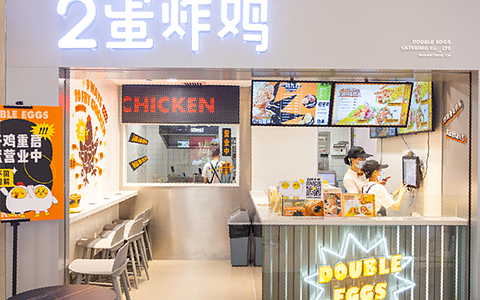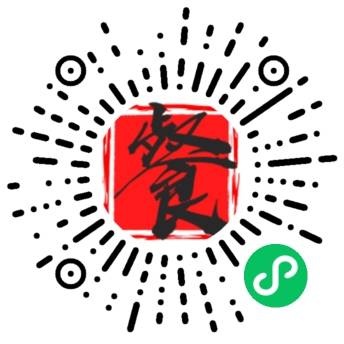▲ Follow us and “Sticky On Top”
When it comes to redesigning or “revamping” packaging designs, the first and foremost question posed should always be “why.” Is the brand expanding its target demographic, for example, or its sustainability credentials? Both are common reasons that prompt companies to knock at designers’ doors. The writer speaks to designers from within the industry to understand what questions must be asked and what trends are pushing redesigns.The main function of packaging is to protect the contents, and in the case of food, offer functionalities such as elongated shelf-life and protection during transport. However, packaging must also deliver on the consumer purchasing level. Catching a consumer’s eye amid an increasingly busy market, and quite literally shelf, is no mean feat.
Visual languageis the most powerful form of communication in retail environments, according to Marc Pruijssers, a Dutch packaging design expert.
Marc Pruijssers presenting at TEDx Venlo in the Netherlands.
“Visual language is our most universal language, a very precise, accurate and effective language, our natural and efficient one. We can already see how society is changing towards this new language. Smartphone cameras have replaced fountain pens and typewriters, and emojis have won over type fonts,” he tells the writer.
With advancements in printing technology, industry can now print high-resolution, full-color images on almost every material – flexibly and at meager cost. This enables it to exploit fully the power of visual language in packaging design and play into redesign concepts.
However, as brands grow and expand, designing packaging that is suitable for mass production also arises as a common reason for a redesign.
“As companies grow, the bespoke, unique and time-intensive packaging that was fine in small quantities is no longer viable at scale. This doesn’t need to be seen as a negative – in fact, redesigning packaging that works with mass manufacture, simplifies overall logistics and process, while maintaining and improving on brand integrity, can be a fascinating design challenge,” Paul Ferry, Co-Founder and Director of creative agency ShopTalk, tellsPackagingInsights.
Essentially, once you have a clear idea of the new strategic objective, you can develop a response that meets those needs, according to Pete Hayes, Co-Director at brand and packaging design agency PB Creative.
“Core to all of this, though – and something that brand managers and their design partners should never lose sight of – is that consumer brand experience must remain at the center of everything,” he says.
Sustainability Driving
Design
Corona traded out plastic six-pack rings for plant-based alternatives in a trial, becoming the first global beer brand to do so.One packaging factor that consumers are increasingly looking for, if not expecting, is sustainability.
“With consumers becoming more and more mindful of their environmental impact, we expect to see many brands communicate more about the carbon footprint of their product and the recyclability of the packaging itself,” Marianne Freund, Marketing Manager at beverage packaging company Ball, tells the writer.
Freund notes that Ball has seen an increase in brands appropriating the sustainability credentials of aluminum cans by creating “bespoke information on the can itself to promote recycling.”
“This ranges from the traditional and effective, ‘Metal Recycles Forever’logo, to the elegant ‘Pure 100% recyclable,’ as well as the campaign style of ‘Cans are an infinitely recyclable alternative to plastic bottles’ and ‘Good Planets are Hard to Find: Recycle,'” she explains.
A host of companies have introduced sustainable versions of their classic packaging.Corona traded out plastic six-pack ringsfor plant-based alternatives in a trial, becoming the first global beer brand to do so.
“In recent years, several UK Government policies have been put forward to address problems with waste, so businesses are having to rethink packaging and design,” adds Hayes.
This should lead to an increase of more credible, longer-term sustainable solutions rather than the “quick fixes” of recent years that offer perceived improvements but little in terms of tangible gains, according to Hayes.
However, Ferry notes that although this may lead to an unprecedented level of brand redesigns in the near future, this year is looking to be an even more unstable and unknown time – especially regarding the UK’s exit from the EU and the position this may place the nation in terms of global trading relations.
“In this way, it comes down to budget a lot of the time. It will be interesting to see if brands put money into sustainability or consolidate their current positions,”he adds.
PB Creative worked with Carex to consolidate the brand that “had expanded dramatically over the years.”
That being said, the level of packaging that still cannot be recycled is shocking, continues Ferry.
“Rather than a constraint, this should be seen as a design challenge – how can we solve this problem with our clients, creatively? The long-term value to the brand, as well as to our world, will come from taking the long-term view,” Ferry says.
“Successful brand design is about creating the perfect balance of sustainability and cost efficiency, with consumer experience and desire still at the epicenter,” Hayes adds.
Packaging Revamps:
Case Studies
PB Creative worked with Carex to consolidate the brand that “had expanded dramatically over the years,” through the design of its packaging. The agency was tasked with delivering unity, creating a stronger synergy and moving Carex into a more contemporary space.“For the Carex revamp, which coincided with its 25th anniversary, we wanted to bring together different personalities within the range in a unified, celebratory and iconic way, while maintaining and protecting the existing visual equities of the brand,” explains Hayes.
The brand engaged with the idea of visual language to drive the design.
“We created a 2D droplet device to complement the established 3D equity. The brand mark was given a subtle refresh, moving to a more single-minded, solid background color. Contemporary graphic textures reinforced each product’s efficacy – a floral design denoted ‘care,’ diamond geometrics ‘clean,’ and a structured hexagonal ‘protect.’ The new design celebrates the fact that Carex is a much-loved brand with a long history and shores it up so that it can stay relevant, and at the top, for another 25 years,”Hayes says.
A second packaging revamp comes from Unilever-owned fragrance brand Axe, known as Lynx in the UK, which worked with PB Creative toreduce the complexity and increase the sustainability of its products’seasonal gift packaging. A packaging strategy was devised that eliminates the need for internal plastic trays, using predominantly paper-based materials to create a fully recyclable pack. As a result, gift configurations are flexible in pack and complexity across the whole portfolio has been reduced and sustainability maximized.
Regarding visual design, bespoke patterns, each derived from the brand’s variants, using geometric forms and color palettes that link directly to the fragrance icons, are used to add a luxurious feel. This also allows the range to balance color with black and deliver a premium feel that looks wrapped and ready to give, the design agency describes.
In the food and beverage market,Mr. Kipling, a Premier Foods brand, revamped its packaging design to appeal to new international markets. In order to appeal to fresh consumers, UK design agency Robot Foods focused on a transmitting “just baked” feeling through the packaging. Despite being a household name in the UK, it’s unknown in markets such as Australia and the US.
While Smith&+Village has unveiled its stylish rebrand of theHarvey Nichols food collection, which had stood untouched since its launch in 1994. The rebranding sought to project the image of the iconic store itself and used “Ab Fab” fashion of the 1990s as its inspiration. This luxury packaging also heavily tapped into the consumer search for sustainability, as is far from throwaway and the store encourages that it is reused.The job for packaging designers will certainly never be a boring one, as aesthetics evolve and industry trends, such as sustainability, drive packaging design. In the words of Hayes, “The job for brand and packaging designers is to rethink how they go about capturing the eyes, hearts and minds of consumers while delivering against these new standards in sustainability.”
Source:Packaging Insight
Author: Laxmi Haigh
Tips:
*Havebrilliantideasorarticlestocontribute?FeelfreetocontactWilburZhu(WeChatID:aotokuer)
/ Read More/
MA Exclusive: 18 F&B Package Design Show Great Transformation
/WeChat Groups /
Long Press this QR Code to follow“FBIF“.Reply number“3” in the main menuto join the largest F&B WeChat Group in the world (more than 40,000+ members). WeChat Groups includeCEO,Dairy,Yogurt,Snacks,coffee,FSMP, Condiments,Beverage,Marketing,Retail,R&D,Packaging, Design,OEMand etc. Follow us and reply “3” in the menu to get more information.














